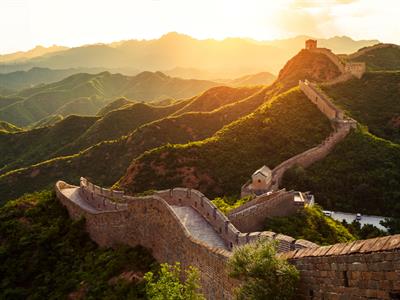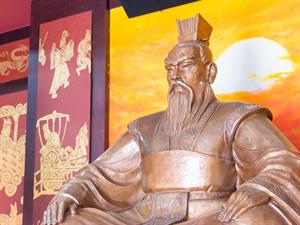
PUMPA - SMART LEARNING
எங்கள் ஆசிரியர்களுடன் 1-ஆன்-1 ஆலோசனை நேரத்தைப் பெறுங்கள். டாப்பர் ஆவதற்கு நாங்கள் பயிற்சி அளிப்போம்
Book Free DemoThe Chin Dynasty and its Downfall:
The mainland of China was ruled by many kings and the first among them was “Shi Huang Ti or Qin Shi Huang” – which means the First emperor who established the mighty Chin dynasty. He ruled China from 221-206 BCE.
The period under Shi Huang Ti was known as the Imperial Chinese Period. He consolidated the Chinese empire under a single rule, who divided the land into 36 command areas for administrative convenience.

The Great Wall of China
He had also issued new imperial currency, weights and measures and uniform scripts. He was ruthless and destroyed many walls and fortifications and built gigantic walls to protect his empire from invasion, named the “Great wall of China”.
Great wall of China: Considered as the World’s largest military structure on earth was built under the regime of Shi Huang Ti, which extends up to \text{20,000 km} in length.
The Constant uprisings from the peasants and the rebellions from small emperors loosened the grip of the Chin dynasty and thus led to its fall.
The Han Dynasty and China \text{(206 BC – 220 AD)}:
1. Liu Bang ended the rule of Shi Huang Ti and the Chin Dynasty and established a new dynasty under him, namely the “Han dynasty” which was one of the longest reigned empires in China’s History.
2. The rule of Han’s extended for 400 years under which imperial China flourished and reached its zenith. The Han dynasty under Liu Bang had “Chang-an” as their capital on the banks of the river “Wei”.
Han Dynasty under Wu-Ti:
Wu-Ti of the Han dynasty was the most prominent of the rulers who brought back China to its glory as he empowered the country with trade and philosophy.

Emperor Wu – Ti
Trade reached new heights under his reign as he had a cordial relationship with Western Empires like Rome. The Silk Road established by him paved the way for the development of trade in China.
Silk Road Of China: This network of trade routes connected China and parts of Europe and the Middle east. It was opened during Wu–Ti's reign, where China’s silk was transported to different parts of the world.
The Silk Road enabled the exchange of goods like Silk clothes to the Western empires and gold, silver and other semi-precious stones to the Eastern empire of China.
Innovations of Han Dynasty:
The Han dynasty is highly credited for the numerous innovations that took place under their regime, which placed them on par with the Western Civilizations.
Some of the major innovations are:
- Invention and usage of Paper.
- Beginning of Practice of documenting happenings.
- Construction of Irrigation tanks.
- Opening of the Silk Road, which enhanced trading.
- Building of Bridges and mountain roads.
- Beginning of Sea trade and construction of Ports.
The Advent of Buddhism:
The new religious order of Buddhism came to China from India via the Silk Route. This advent of Buddhism was well complemented by the existing principles of Confucianism and Taoism in China.
The new religious order of Buddhism came to China from India via the Silk Route. This advent of Buddhism was well complemented by the existing principles of Confucianism and Taoism in China.

Buddha Statue in China
Over the period, a new branch of Buddhism slowly began to emerge named the “Chinese Buddhism”.
Tang Dynasty: Buddhism reached its height under the Tang dynasty of China. This period witnessed the teaching of Buddhism in many schools of China.
Buddhism from India also carried the artistic styles of Buddhist sculptures, which were modified according to the Chinese traditions.
Later Chinese Buddhism transcended boundaries and spread across the regions of Korea and Japan.
The fall of the Han dynasty:
1. The Fringe areas of China were occupied by the Peasants and small emperors who rose against the Han dynasty and the infighting was also prevailing between them.
2. The Han emperors found it difficult to bring the situation under control, which was further aggravated by “Yellow Turbans – new religious cult”, which tried to stir a rebellion and establish their dynasty.
3. This precarious situation slowly crippled the might of the Han dynasty and led to its downfall. China, post the Han rule saw numerous revolts and rebellions.